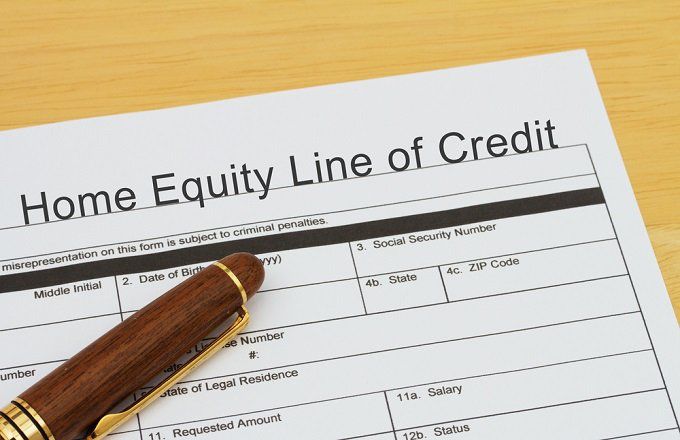You should carefully assess the contract to make sure you’re getting the greatest deal for your financial circumstances if you’re thinking about acquiring a home equity line of credit (HELOC) to pay for home improvements, pay off debt, or cover unforeseen expenses. It can be difficult to know where to begin with so many alternatives available. We’ll provide you some advice in this article on how to pick a HELOC with the greatest features and interest rate to suit your needs.
The terms and conditions of a loan secured by the borrower’s home equity are set forth in a HELOC agreement, also known as a home equity line of credit agreement. Depending on the lender and the precise loan terms, the structure of fixed rate HELOC loans might change, but these agreements often have a few essential components.
- Loan Quantity and Goal: The maximum loan amount the borrower is qualified to receive as well as the loan’s purpose will be outlined in the HELOC agreement. HELOCs are frequently used for home improvements, debt reduction, or other significant costs, but the lender may impose conditions on how the money may be put to use.
- Interest Rate and Repayment Terms: The HELOC agreement will outline the interest rate and repayment terms that the borrower will be subjected to. HELOCs frequently feature variable interest rates, which implies that the rate may change over time depending on the state of the market. The minimum payment amount and the duration of the repayment period will also be specified in the repayment terms, along with how the borrower must repay the loan.
- Draw Period: The HELOC agreement will also outline the time frame during which the borrower may access the funds, called the draw period. Usually lasting between five and ten years, throughout this time the borrower is permitted to take out as much credit as they require and repay it, up to the loan’s maximum.
- Minimum Draw Amount: Certain HELOC contracts could stipulate a minimum draw amount, or the least sum that the borrower can take out of the loan at once. This is often included to make sure the borrower is making use of the loan and to stop them from taking out little sums of money repeatedly.
- Charges and Fees: All fees and costs related to the loan, such as application fees, origination fees, and yearly fees, will also be specified in the HELOC agreement. It’s vital to thoroughly analyze the agreement to understand the total cost of the loan because these fees can vary based on the lender and the exact loan terms.
- Collateral and Default: As a HELOC is backed by the borrower’s equity in their home, the contract will have clauses addressing collateral and default. The lender may be entitled to foreclose on the property and sell it to repay their losses if the borrower fails on the loan.
- Additional Terms and Conditions: The HELOC agreement may also contain a number of other terms and conditions, including as limitations on prepayment, late payment penalties, and the authority to change the agreement. To comprehend the entire extent of the agreement and the borrower’s obligations, it is crucial to carefully read these terms.
Pay Attention to Interest Rates
The interest rate is a crucial consideration when assessing a HELOC deal. Some lenders also provide HELOC loans with fixed interest rates, while the majority of HELOC loans have variable interest rates that can change over time. a set price If you want to borrow a significant sum of money or want to ensure that you can afford the monthly payments over the long term, a HELOC can give you the confidence of knowing that your interest rate won’t change.
Payment Terms
The terms of repayment are yet another important aspect to consider when assessing a HELOC deal. You may be required to make principal and interest payments on some HELOC loans while interest-only payments are required on others during the draw period. It’s critical to comprehend the loan’s repayment conditions so that you may adjust your budget and prevent any unpleasant shocks in the future.
Loan Costs
You should take the costs of the loan into account while selecting a HELOC. Certain lenders may levy yearly, origination, or application fees; these costs can mount up over time and substantially raise the cost of the loan. Before you sign the loan agreement, make sure you are aware of all the expenses involved. If anything is unclear, don’t hesitate to contact your lender for clarification.
Additional Concerns
When selecting a HELOC, there are a number of additional aspects to take into account in addition to the interest rate, payback terms, and fees. If you just need to borrow a little sum of money, for instance, you might want to look for a loan with a low minimum draw amount. Similarly, if you think you’ll need access to funds for a longer length of time, you might want to look for a loan with a higher draw period.
Shop Around
The best HELOC for your needs can ultimately be found by doing some research and comparison shopping. To make sure you comprehend the loan’s terms, compare the interest rates and fees offered by several lenders. You should also carefully study the small print of each agreement. Finding a HELOC that offers the best interest rate and features for your financial condition and aids in the achievement of your financial objectives is possible with the correct research and a little bit of patience.
In Conclusion
assessing a HELOC arrangement might be difficult, but by carefully weighing the interest rate, repayment schedule, fees, and other elements, you can decide which choice is best for you. You can find a HELOC loan that matches your financial objectives and enables you to realize your dreams by taking the time to conduct your homework and weigh your possibilities.





























